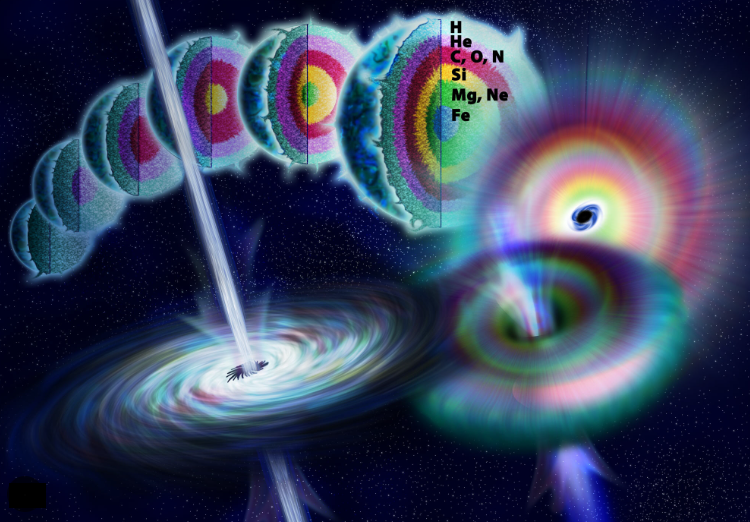
Bachelor
Site: Merate (LC)
Duration
3 mesi
Tutor
Ghirlanda Giancarlo, Nava Lara, Om Sharan Salafia
Contact
giancarlo.ghirlandaAT inaf.it
Description
Background: Gamma Ray Bursts (GRBs) signpost the death of very massive isolated stars or the merger of binary compact objects (hosting at least a neutron star).
They are produced by the formation of a stellar mass black hole – accretion disk system which powers bipolar relativistic jets.
GRBs are the most luminous transient sources in the universe and are currently detected up to redshift 9.2.
One of the still open questions is what is the emission mechanism which makes them appear as short flashes of high energy (0.01-1 MeV) radiation.
The leading scenario is synchrotron radiation by relativistic electrons within their jets.
The observed spectrum should then bear characteristic signatures of this emission. In particular the powerlaw spectral index of the spectrum, above the SED peak, is directly related to the electron non-thermal electron energy distribution.
Scope of the thesis: dig into the publicly available GRB spectral catalogs and select a sample of GRBs with well measured high energy spectral index and calculate the slope of the electron energy distribution. Verify if there is any correlation of this physical parameter with other spectral/temporal features obtainable from the public catalogs. Discuss the results in the context of current models and simulations (available in the literature) of electron acceleration at mildly relativistic highly magnetized shocks, i.e. those expected to develop within the GRB jet and responsible for the gamma ray emission we see.
Skills: basic theory of shock acceleration and synchrotron emission. Database query and visualization through TOPCAT. Study of the relevant literature.
[Credit image: Wikipedia]